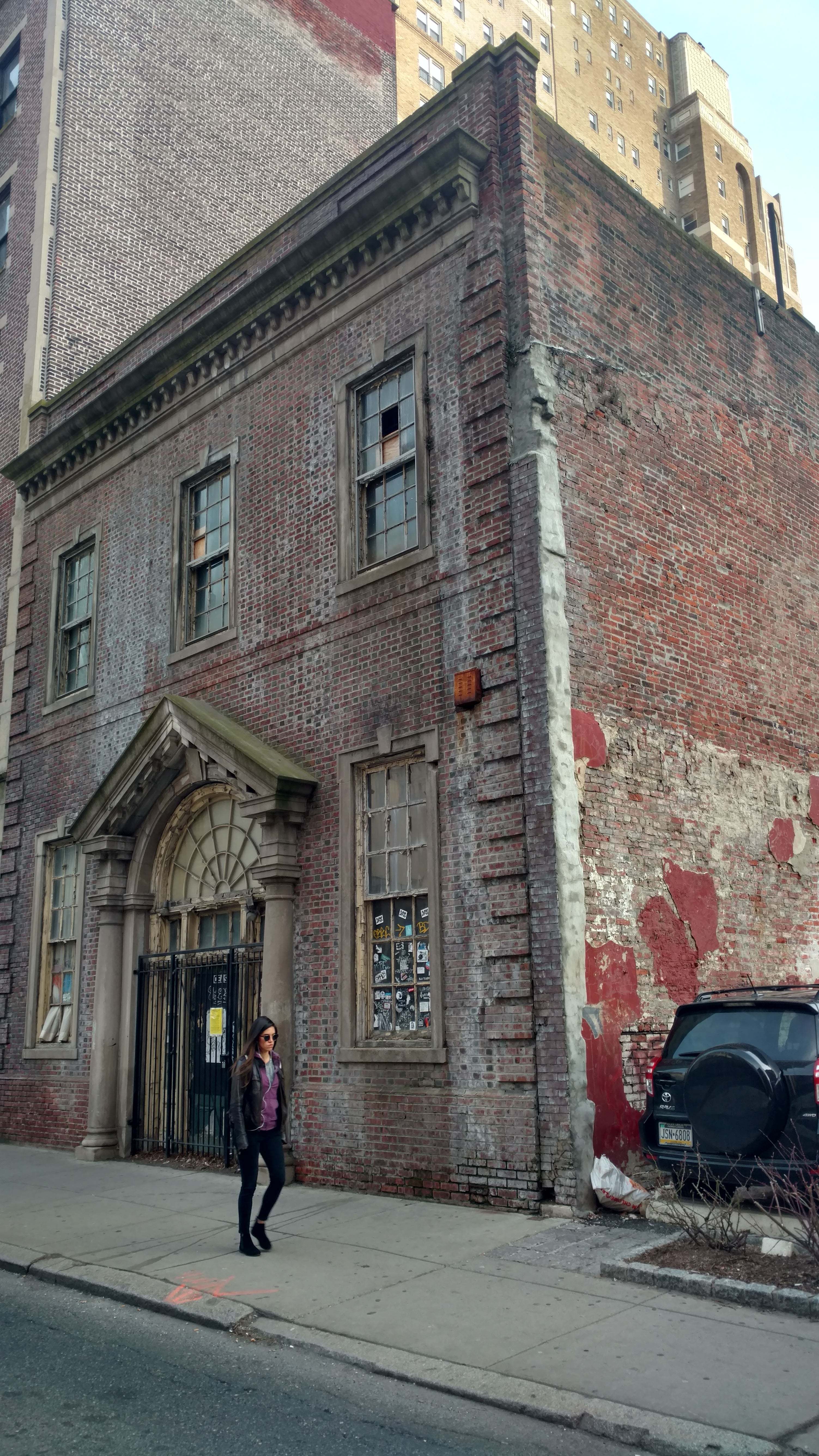Historic Oliver H. Bair Funeral Home to be demolished for Rittenhouse tower

With Friday’s meeting of the Historical Commission, the fate of 1918-20 Sansom Street—formerly the Oliver H. Bair Funeral Home—seems to be sealed. The body voted unanimously to grant the petition for financial hardship, which will allow the Southern Land Company to demolish the historically protected building.
The real estate company argues that the building is beyond repair and cannot possibly be used in their plans or for any other future use. The historical commission’s own investigation, led by Margaret Sowell of Real Estate Strategies, came to a similar conclusion.
The demolition would be part of the Southern Land Company’s larger project to fill in the last undeveloped parcel off of Rittenhouse Square with a residential skyscraper. In the original proposal the Bair building’s historically protected neighbors—the former Warwick Apartments and the Rittenhouse Coffee shop—would have been felled as well.
But after a storm of protest, Southern Land agreed to rehabilitate and make use of the other two buildings in partnership with Project HOME—turning them into an affordable housing complex.
The Preservation Alliance of Greater Philadelphia did not oppose the hardship application for the remaining building.
Instead resistance to the proposal came from David Traub of Save Our Sites and from a handful of Rittenhouse residents.
“On Jewelers’ Row we rightly lament that the buildings weren’t designated, but here on Warwick Row we are demolishing a designated building,” said Traub. “Oliver Bair is just one small building, but old and historic Philadelphia is being chipped away at one building at a time.”
The structural engineers retained by Southern Land testified that the building, especially the interior, is in worse condition that the other two historically protected buildings on the block. He said the brick is soft and that clay can be scooped from the wall by the handful.
The CEO of Southern Land, Timothy Downey, expressed sympathy with Traub’s aims. But his earlier commitment to the Warwick and Rittenhouse Coffee shop already seemed to be spiraling.
“I’ve learned that I need to be a lot more careful what I promise in the future,” said Downey. “I’m going to do that, I’m going to keep my promise. It’s just never-ended, how much more and more it’s costing to save that [the Warwick Apartments].”
Much of the hearing echoed the presentations at the February meeting of the hardship committee. However, outspoken preservationist Oscar Beisert hadn’t been in attendance of that hearing.
At Friday’s meeting Besiert stressed that he didn’t oppose the project, but he questioned why the façade of the Bair building couldn’t be preserved.
Downey said that such an action would be impossible because the of the bricks’ advanced state of deterioration. He said that he just couldn’t make the commitment. After asking Downey about his opinion on a facadectomy, the Historical Commission didn’t seek to press the issue further.
“I’m not opposed to this project and I understand the need to demolish almost the entire building, but the things I hear in this room I feel like some people have maybe never left Philadelphia,” said Beisert. “If I could give you a tour of DC, or Louisville, saving the façade of a building is standard. A very common practice, it’s done everywhere else. I’ve seen 8 story facades in DC preserved in areas with less economic viability than this.”
Facadectomies are undertaken periodically in Philadelphia—currently the Royal Theater is meant to undergo such a procedure—but they are not that common.
After hearing from Sowell of Real Estate Strategies, who the historical commission retained as a consultant, the commission voted and quickly approved Southern Land Company’s hardship appeal.
After the closure of the case, Beisert expressed his disillusionment.
“What’s the point of designating anything if this can happen in one of the wealthiest neighborhoods in the city,” he said. “It [the outcome] was already decided before the meeting.”
Afterwards the First Mennonite Church of Philadelphia at 509-13 Diamond Street and the St. John German Evangelical Church Lutheran Church at 516 Wharton were both added to the local historic register. Sacks Playground at 400 Washington Avenue and the statue of Christopher Columbus in Marconi Plaza were as well.
WHYY is your source for fact-based, in-depth journalism and information. As a nonprofit organization, we rely on financial support from readers like you. Please give today.




